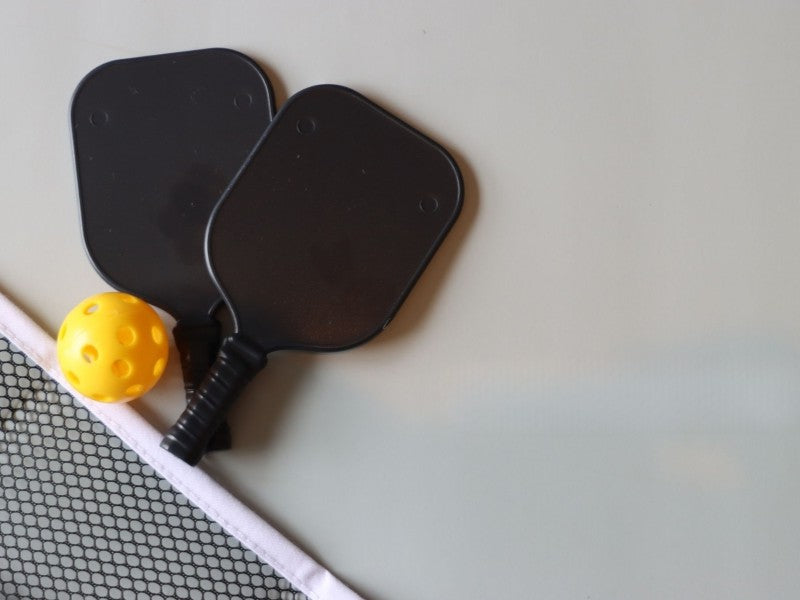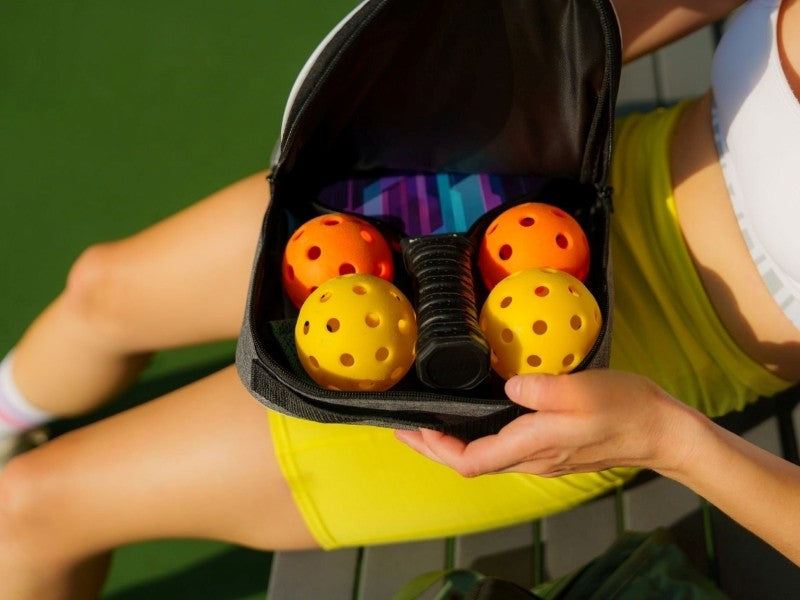Pickleball equipment has evolved rapidly over the last decade, and one of the strongest indicators of this evolution is the rise of specialized pickleball paddle brands. Choosing the right brand requires more than browsing popular lists; it requires understanding what distinguishes one manufacturer from another.
Part 1 — Core Factors That Separate Pickleball Paddle Brands
1. Engineering Philosophy and Design Priorities
Every major pickleball paddle brand starts with a design philosophy. Some brands optimize for power, some for touch, some for balance, and some for broader versatility.
Key factors include:
Paddle Balance
Brands may prioritize:
· Head-heavy balance → more drive power
· Head-light balance → quicker hand speed at the kitchen
· Neutral balance → adaptable to multiple play styles
Surface Material Strategy
Different brands lean heavily into certain face materials:
· Carbon fiber for spin + control
· Fiberglass for pop + speed
· Hybrid blends for balanced play
Core Structure
Brand signature differences often appear at the core:
· Polypropylene honeycomb
· Thermoformed foam-injected edges
· Proprietary high-density polymer cores
· Multi-layer dampening cores
A brand’s engineering identity directly determines how its paddles feel in hand.
2. Materials Innovation — The Most Critical Brand Differentiator
Carbon Fiber Advancements
Top-tier paddle brands increasingly rely on unidirectional or cross-weave carbon fiber. What varies is:
· the carbon grade
· the layup orientation
· the surface texture
· how carbon is bonded to the core
Brands like Joola and Selkirk are known for aggressive spin-performance surfaces due to advanced texture technologies.
Fiberglass Variants
Fiberglass remains popular for its natural “pop,” but brands differ significantly in resin ratios and durability coatings.
Proprietary Composites
Some brands develop unique blends to produce:
· more vibration dampening
· higher dwell time
· greater rigidity for power hitters
Material engineering is one of the clearest ways to distinguish pickleball paddle brands.
3. Thermoforming, Edgeless Design, and Modern Manufacturing Techniques
Recently, paddle manufacturers have adopted processes previously used in aerospace and pro-level racquet sports.
Thermoformed Paddles
Many competitive brands now use thermoforming to create a single-piece frame, improving:
· structural integrity
· edge durability
· paddle power
· sweet spot consistency
Foam-Injected Perimeters
A growing number of premium brands reinforce the perimeter with injected foam to:
· reduce vibration
· stabilize off-center hits
· enlarge the effective sweet spot
Edgeless Frames
Some brands adopt edgeless designs for:
· reduced aerodynamic drag
· smoother hand transitions
· an ultra-modern aesthetic
Manufacturing differences contribute heavily to how each brand’s paddle plays.

Part 2 — Brand-by-Brand Overview
Below is a carefully structured breakdown of major paddle brands and what sets each apart.
1. Selkirk — Known for Pro-Level Control and Premium Build
Selkirk is widely regarded as a leader in paddle craftsmanship and performance analytics. Their paddles often feature:
· advanced carbon fiber surface technology
· a focus on control and precision
· high-end polymer cores
· consistent weight distribution
Typical user profile:
Players who demand premium feel, stability, and refined control.
2. Joola — Spin-Focused Performance with Pro Athlete Influence
Joola entered pickleball by leveraging its heritage in table tennis. Its paddles emphasize:
· aggressive spin texture
· powerful carbon layups
· aerodynamic shaping
· collaboration with top pro players
Typical user profile:
Players who rely heavily on topspin, counter-attacks, and fast kitchen hand exchanges.
3. Onix — Power-Centric Design with Wide Player Appeal
Onix continues to dominate the recreational-to-competitive segment. Their brand identity focuses on:
· fiberglass composites offering natural pop
· thick cores for added drive power
· accessible price-to-performance ratios
Typical user profile:
Players who like explosive hits, drives, and power-first gameplay.
4. Engage — Science-Driven Engineering and Consistency
Engage is known for engineering paddles through rigorous R&D. Brand features include:
· vibration-reducing core structures
· textured friction faces for controlled spin
· consistent, laboratory-validated paddles
Typical user profile:
Players who prefer predictable performance and refined touch.
5. Srikel — Precision Craftsmanship with a Modern Engineering Approach
Srikel is a rising paddle manufacturer gaining attention for its distinctive engineering priorities and commitment to material innovation. What makes Srikel unique among pickleball paddle brands includes:
· Emphasis on Structural Precision
· Advanced Composite Surface Choices
· Player-Tuned Weight and Balance Profiles
· A Balanced Approach for Both Power and Control
Ideal User Profile:
Players seeking a next-generation paddle offering precision feel, stability, and modern composite innovation.
Part 3 — How to Evaluate Pickleball Paddle Brands as a Player
Before deeper reviews and comparative analysis, players should understand how to evaluate paddle brands based on personal needs.
1. Your Playing Style
· Control players → look for refined carbon fiber, high dwell time
· Power hitters → fiberglass or stiff carbon + thermoformed frames
· Hybrid players → balanced composites + mid-core thickness
2. Preferred Weight Category
· Light paddles → quick at the net
· Mid-weight → all-around
· Heavy builds → power biased
3. Grip Length and Shape
Brands differ in:
· handle length
· grip contour
· wrap material
Players switching from tennis often prefer elongated handles from certain brands.
4. Budget vs. Performance Tier
Brands offer:
· elite pro-level paddles
· mid-range hybrids
· entry-level composite paddles
Understanding tiers helps you avoid overpaying or under-choosing.
Part 4 — In-Depth Comparison: What Truly Differentiates Paddle Brands
To help players make informed decisions, this section examines how the major pickleball paddle brands compare across performance, engineering, durability, and intended skill levels. Rather than ranking brands—since “best” varies by playing style—this comparison highlights the attributes that consistently define each manufacturer.
1. Power vs. Control Philosophy Across Brands
● Selkirk
· Prioritizes refined control and shot consistency
· Known for long dwell time and precision
· Ideal for players who prefer soft game excellence
● Joola
· Focused on spin generation and offensive play
· Surface textures designed for maximum ball friction
· Benefits aggressive attackers and counter-punchers
● Onix
· Naturally powerful due to fiberglass-heavy construction
· Easy pop for drives and speed-ups
· Better for players transitioning from power sports like squash or racquetball
● Engage
· Scienced-backed balance of control + touch
· Excellent for strategic kitchen play
· Slightly muted power but increased stability
● Srikel
· Balanced performance model
· Carbon options offer excellent control; hybrid builds add drive power
· Designed for players wanting stability and reliable all-court maneuverability
Overall:
If you rely on precision → look at Selkirk / Engage / Srikel’s control models.
If you lean on aggressive offense → Joola or Onix may match your style.
If you want balanced all-around performance → Srikel and certain Engage models stand out.
2. Material Durability and Long-Term Feel
Durability is one of the most overlooked factors when comparing pickleball paddle brands, but it dramatically affects performance over months of play.
Selkirk
· High-grade carbon layups
· Durable edge guards
· Long-lasting face tension
Joola
· Excellent performance early in the paddle’s life
· Textured coating may wear faster in high-spin usage
Onix
· Fiberglass pop is strong but may lose stiffness quicker than carbon
· Edge guards protect well in recreational use
Engage
· Known for stable long-term feel through consistent build quality
· Tightly controlled lamination reduces delamination risk
· Composite faces remain consistent for longer periods
· CNC precision improves structural uniformity, helping paddles keep shape
Summary:
For long-term durability, carbon-focused brands like Selkirk, Engage, and Srikel offer stronger retention of feel and performance.
3. Manufacturing Technology Differences
The technology each brand uses is a major factor in how their paddles feel.
Thermoforming
· Popular among modern brands
· Used by Joola and many newer competitors
· Produces stiffer, more powerful paddles
Traditional Layered Builds
· Often used by Selkirk for control-based models
· Softer feel, better touch
Foam-Injected Walls
· Provides stability on edge hits
· Srikel’s higher-end paddles use this technique
· Helps enlarge effective sweet spot
Takeaway:
Players who want raw power often prefer thermoformed paddles; players who want touch choose traditional layered builds; hybrid models like those from Srikel cater to players seeking both.
Part 5 — Who Should Choose Which Brand?
Choosing among the many pickleball paddle brands requires aligning brand identity with player type, not marketing hype.
1. For Beginners
Ideal choices: Onix, Srikel (entry models), Engage
· Accessible control
· Predictable feel
· Reasonable price-to-performance ratio
Beginners should choose paddles with softer cores and moderate spin.
2. For Intermediate Players (the largest player base)
Ideal choices: Selkirk, Srikel, Joola
· Greater control for developing kitchen strategy
· More spin for advanced shot shaping
Intermediate players should select paddles that allow them to grow into both soft and power games.
3. For Advanced & Tournament-Level Players
Ideal choices: Selkirk (premium series), Joola, Srikel carbon pro models
· Maximum precision
· High spin ceiling
· Strong structural durability
Advanced players often need defined identity paddles: hyper-control or hyper-power—or a modern hybrid like Srikel’s.
Part 6 — How to Choose the Right Paddle Brand for Your Style
1. Identify Your Priority
· Touch & control: Selkirk, Engage, Srikel’s carbon builds
· Spin & aggression: Joola
· Power & speed-ups: Onix, thermoformed builds
· All-court flexibility: Srikel, Select Engage models
2. Match Grip & Handle Length to Your Background
· Tennis players often prefer elongated handles (some Srikel and Joola models)
· Table tennis background players prefer shorter, tacky grips
3. Consider Your Local Playing Environment
· Humid climates may reduce friction faster
· Hot environments benefit from stiffer paddles
· Cold weather requires vibration-absorbing cores
Brands differ in how their materials respond to environmental stress.









Leave a comment
This site is protected by hCaptcha and the hCaptcha Privacy Policy and Terms of Service apply.